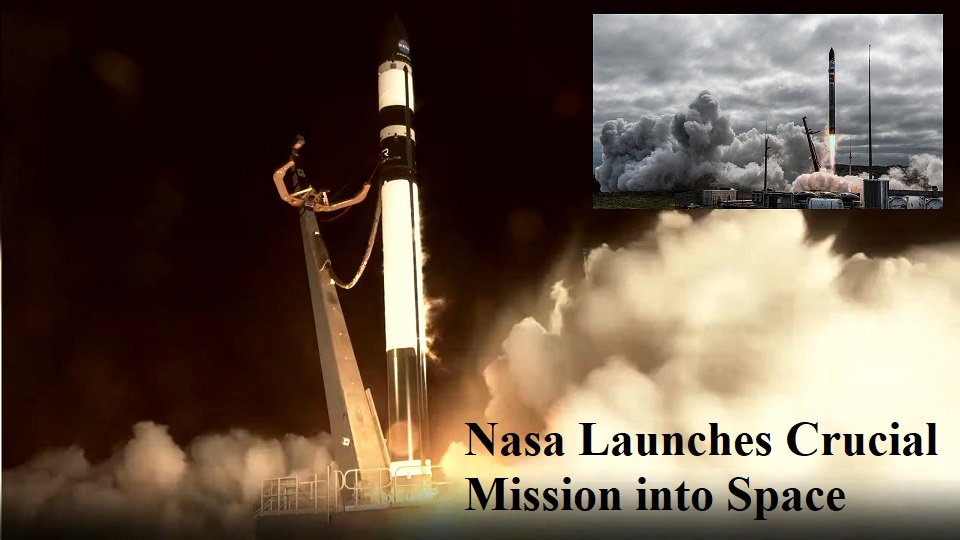- FREE Express Shipping On Orders $99+

Nasa launches crucial mission into space
In a bid to finish up the power creating some distance from the Earth, the US space affiliation Nasa has taken out a satellite to zero in on the Cold and Antarctica, revealed CNN. The satellites were sent off with the assistance of a Rocket Lab Electron rocket from Mahia, New Zealand, and they were conveyed at 4:35am ET. As per Nasa, the data will edify environment models and ideally lead to better suspicions for what the environment emergency will mean for ocean levels, climate, snow and ice cover.
- The mission called Polar Unbelievable Energy in the Far-InfraRed Fundamental (PREFIRE) depends on better discernment the climate of Earth and how parts are connected with getting power in our planet.
- Nasa conveyed that straightforwardly following holding energy in the unsettled areas from the Sun, climate and sea streams push that power toward the posts, where it transmits vertically into space. Some of such power has never been evaluated.
- The mission, Nasa said, is contained two CubeSats fitted with unequivocal more humble than ordinary power sensors. The subsequent boat off will be declared after the goodbye of the first.
- Straightforwardly following being delivered off, both of the satellites will be in nonconcurrent close polar circles overlooking a particular spot at various times, seeing equivalent district inside the space of hours contrast.
- This is the means by which Nasa would gather data about unconventionalities occurring on a brief timeframe scale and require moderate checking including what shady cover means for the temperature on the planet.
NASA, the world’s space affiliations, and different parties analyze our nearby planet get-together and past with space missions. Our partners show you why these missions matter and how to associate. For bit by bit space news and gadgets to push space science and assessment,
In the works
- India’s Aditya-L1, delivered off in September 2023, is the country’s most significant sun based mission.
- Delivered off in 2020, the ESA-drove Sun based Orbiter mission is imaging the Sun and enormous locale of its crown extraordinarily close unusually.
- Sent off in 2018, NASA’s Parker Sun set up Test is concentrating as for the Sun’s ongoing situation by being in it, the nearest any space contraption has whenever wandered.
- Starting around 2010, NASA’s Sun based Parts Observatory (SDO) has been totally organizing the Sun’s dynamic regions to see the value in how sun filled flares make and emanate.
- Starting around 2006, NASA’s Sound structure A van has been giving us snippets of data on sun arranged releases.
- The ESA-NASA SOHO transport has been seeing the Sun starting around 1995, especially utilizing its coronagraph to hinder light to all the practically 100% see the crown and track sun based radiations.
Very close
Delivering off in 2024, ESA’s Proba-3 contains two rockets that will fly in line to make a coronagraph that will zero in on the inner layers of the Sun’s ongoing situation.
The APEP mission
The three rockets containing the APEP mission sent off on Monday, April 8, 2024, at 2:40pm, 3:25pm, and 4:28pm ET from NASA’s Clubs Flight Office in Virginia. The rockets appeared at levels of 254 miles, 255 miles, and 256 miles (410 kilometers, 411 kilometers, and 413 kilometers), freely. The PI reports the second and third rockets were delivered off farther secluded to guarantee the best pre-and – post top overshadowing conditions were gotten and that each science instrument on the three head payloads and 12 sendoff sub payloads really took evaluations. This article was besides fortified to address that the past sounding rockets were delivered off and recuperated from White Sands Test Office to White Sands Rocket Reach.
Rigid sun set with dull concerning
NASA will deliver off three sounding rockets during the rigid sun set up dull concerning April 8, 2024, to zero in on how Earth’s upper climate is impacted when light quickly darkens over a piece of the planet. The Air Disturbs around Cover Way (APEP) sounding rockets will transport off from NASA’s Beats Flight Office in Virginia to zero in on the aggravations in the ionosphere made when the Moon overshadows the Sun. The sounding rockets had been actually delivered off and really recuperated from White Sands Rocket Show up at in New Mexico, during the October 2023 annular sunlight based overshadow. They have been fixed with new instrumentation and will be relaunched in April 2024. The mission is driven by Aroh Barjatya, a teacher of arranging material science at Embry-Puzzle Aeronautical School in Florida, where he puts together the Space and Barometrical Instrumentation Lab.
A get-together wearing blue coats present for the image
They stand inside a tall, current room. Three silver rockets are behind them. This photograph shows the three APEP sounding rockets and the help bundle after effective get-together. The trailblazer, Aroh Barjatya, is at the top neighborhood, close to the guardrails on the subsequent floor.
NASA/Berit Dull
The sounding rockets will send off at three indisputable times: 45 minutes sooner, during, and 45 minutes after the peak nearby obscuration. These reaches are essential to collect information on what the Sun’s unexpected dissipating means for the ionosphere, making aggravations that could possibly block our trades.
This reasonable improvement is a depiction of what spectators could hope to see during a complete sun controlled dim, similar to the one occurring over the US on April 8, 2024.
NASA’s Steady Depiction Studio
The ionosphere is a district of Earth’s current circumstance that is between 55 to 310 miles (90 to 500 kilometers) over the ground. “An electric region reflects and refracts radio transmissions, what’s more effects satellite exchanges as the transmissions go through,” said Barjatya. “Understanding the ionosphere and making models to assist us with hoping to disturb influences is critical to ensuring our obviously correspondence subordinate world works easily.”



















